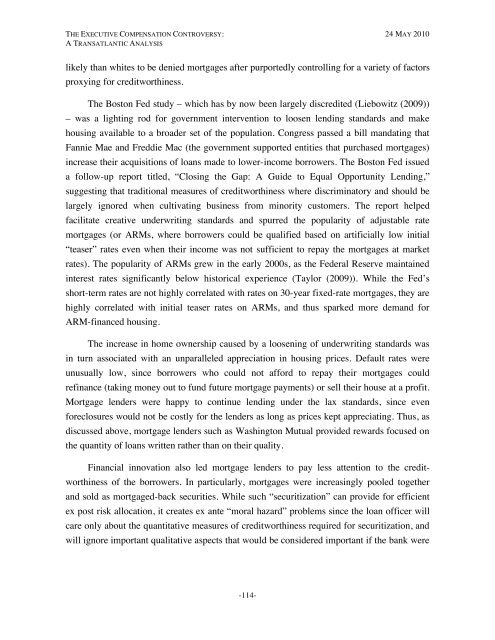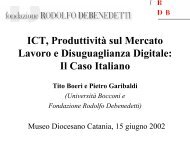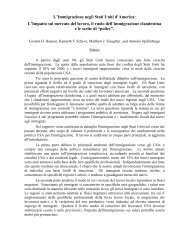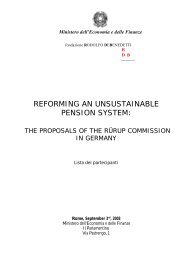The Executive Compensation Controversy - Fondazione Rodolfo ...
The Executive Compensation Controversy - Fondazione Rodolfo ...
The Executive Compensation Controversy - Fondazione Rodolfo ...
Create successful ePaper yourself
Turn your PDF publications into a flip-book with our unique Google optimized e-Paper software.
THE EXECUTIVE COMPENSATION CONTROVERSY: 24 MAY 2010A TRANSATLANTIC ANALYSISlikely than whites to be denied mortgages after purportedly controlling for a variety of factorsproxying for creditworthiness.<strong>The</strong> Boston Fed study – which has by now been largely discredited (Liebowitz (2009))– was a lighting rod for government intervention to loosen lending standards and makehousing available to a broader set of the population. Congress passed a bill mandating thatFannie Mae and Freddie Mac (the government supported entities that purchased mortgages)increase their acquisitions of loans made to lower-income borrowers. <strong>The</strong> Boston Fed issueda follow-up report titled, “Closing the Gap: A Guide to Equal Opportunity Lending,”suggesting that traditional measures of creditworthiness where discriminatory and should belargely ignored when cultivating business from minority customers. <strong>The</strong> report helpedfacilitate creative underwriting standards and spurred the popularity of adjustable ratemortgages (or ARMs, where borrowers could be qualified based on artificially low initial“teaser” rates even when their income was not sufficient to repay the mortgages at marketrates). <strong>The</strong> popularity of ARMs grew in the early 2000s, as the Federal Reserve maintainedinterest rates significantly below historical experience (Taylor (2009)). While the Fed’sshort-term rates are not highly correlated with rates on 30-year fixed-rate mortgages, they arehighly correlated with initial teaser rates on ARMs, and thus sparked more demand forARM-financed housing.<strong>The</strong> increase in home ownership caused by a loosening of underwriting standards wasin turn associated with an unparalleled appreciation in housing prices. Default rates wereunusually low, since borrowers who could not afford to repay their mortgages couldrefinance (taking money out to fund future mortgage payments) or sell their house at a profit.Mortgage lenders were happy to continue lending under the lax standards, since evenforeclosures would not be costly for the lenders as long as prices kept appreciating. Thus, asdiscussed above, mortgage lenders such as Washington Mutual provided rewards focused onthe quantity of loans written rather than on their quality.Financial innovation also led mortgage lenders to pay less attention to the creditworthinessof the borrowers. In particularly, mortgages were increasingly pooled togetherand sold as mortgaged-back securities. While such “securitization” can provide for efficientex post risk allocation, it creates ex ante “moral hazard” problems since the loan officer willcare only about the quantitative measures of creditworthiness required for securitization, andwill ignore important qualitative aspects that would be considered important if the bank were-114-









